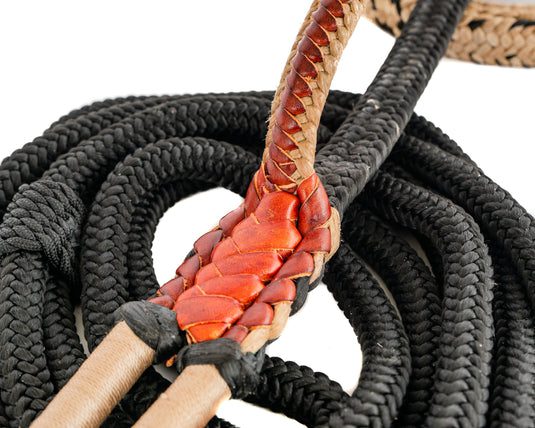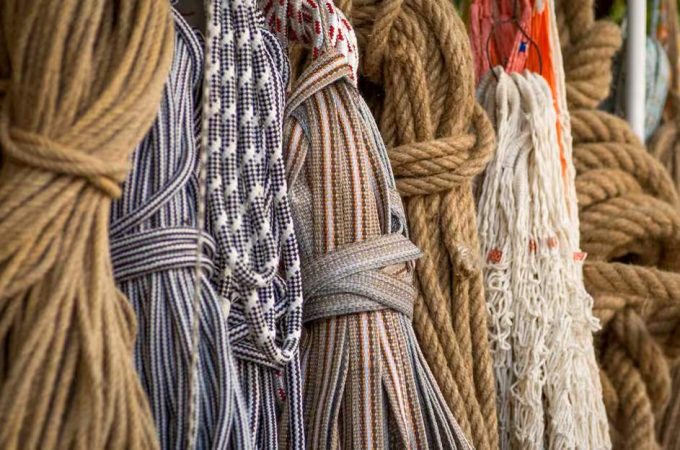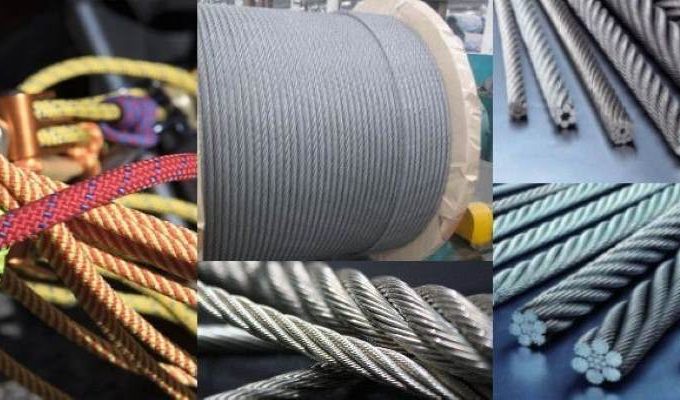
American Vs Brazilian Bull Rope: Tug of Traditions
American bull ropes are designed with a flat loop while Brazilian bull ropes have a braided handle. The Brazilian style offers more grip control, preferred by many professional riders.
Contents at a Glance
ToggleBull riding is an adrenaline-packed sport that requires the right equipment for performance and safety. The choice between an American or Brazilian bull rope is crucial for riders, as each type presents distinct features suited to different riding styles. The American bull rope typically includes a plaited leather handle and a flat loop that fits around the bull’s girth, providing stability and balance.
Conversely, Brazilian bull ropes boast a round braided handle which riders often find gives them a firmer grip, potentially translating to better control during the 8-second ride. Understanding the nuances between these ropes aids enthusiasts and competitors in selecting the gear that best fits their technique and comfort level.
Ropes In Rodeo Heritage
Ropes are integral to rodeo heritage, serving not only as practical tools but also as cultural symbols. In rodeo events, the bull rope is paramount—its design and usage reflective of the region’s rodeo practices and traditions. Bull ropes feature prominently in cultural ceremonies, where they embody the spirit and history of the sport.
The United States and Brazil, while both passionate about rodeo, differ in their approach to bull roping. American bull ropes typically have a flat braided design with a handhold constructed from leather or rawhide. They often include a bell attached below the handhold to ensure the rope falls away from the bull once the rider dismounts. Brazilian bull ropes, known as “Corda Americana” in Brazil, differ by being round in construction and generally have no bell. The rider’s hand is secured using a braided loop, which is tailored to suit a “Brazilian grip”.
- Bull ropes carry significant cultural weight in rodeo circles.
- American bull ropes: Flat braid, leather handhold, and bell attachment.
- Brazilian bull ropes: Round structure, braided hand loop, no bell.
Design Distinctions
American bull ropes typically feature a blend of quality materials such as poly blends, leather, and sometimes nylon to ensure durability and flexibility. This combination allows for resilience against wear while providing a less stiff sensation for the rider, which helps in gripping.
Brazilian bull rope craftsmanship
The Brazilian bull rope is renowned for its exemplary craftsmanship. Artisans utilize primarily rawhide leather, which is treated through a traditional process to enhance its strength. The meticulous attention to detail results in a rope that boasts both elegance and robustness.
How design impacts performance
The design elements specific to each bull rope type have a significant impact on performance and rider experience. American bull ropes, with their softer materials, tend to offer more flexibility and comfort, which can translate to longer ride times. Conversely, the Brazilian bull rope, with its focus on a firm grip facilitated by the rawhide material, provides the rider with a different level of control, which may influence their riding style and interaction with the bull.
Gripping Techniques
The American handle is renowned for its distinct form, emphasizing a secure and steady grip. Crafted with precision, the handle allows for a firm grasp, leading to enhanced control over the bull. Participants relying on this technique often exhibit a consistent and calculated approach to bull riding, aiming for maximum efficiency and minimal risk.
Brazilian grip style, on the other hand, is celebrated for its versatility and flair. This technique affords riders a more dynamic handling of the rope, which can be advantageous in accommodating the unpredictable movements of the bull. The adaptability inherent in this grip often translates into a more daring and flamboyant performance, resonating well with audiences seeking excitement in the sport.
| Handling Technique | Attributes | Performance in Competitions |
|---|---|---|
| American Handle | Form-centered, Steady | Consistent, Risk-averse |
| Brazilian Grip | Adaptable, Flair-driven | Dynamic, Audience-engaging |
The Clash Of Roping Philosophies
The historical evolution of American bull roping is deeply intertwined with the culture of ranching and rodeo in the United States. This tradition hails back to the needs of cowboys who used the ropes for cattle handling and eventually integrated the skill into competitive sports.
The American bull rope typically takes on a form with a flat braided design, which is often seen as an emblem of the Western cowboy spirit.
Contrastingly, the origins and traditions of Brazilian bull roping stem from the country’s rich vaquero heritage. Known for its distinctive circular loop and dynamic technique, Brazilian bull roping emphasizes agility and finesse, reflecting the unique style of South American cowhands.
As bull roping continues to evolve, modern-day perceptions and adaptations reveal a mixture of respect for tradition and a push toward innovation. Bull ropes are no longer seen solely as tools of the trade but also as sports equipment, tailored to both the rider’s and the animal’s safety. This evolution underscores the sport’s growth and worldwide appeal, beyond its humble origins.
Rodeo Competitions: A Cultural Showcase
Understanding the intricacies of rodeo competitions reveals the cultural significance of American bull ropes and Brazilian bull ropes in these events. Renowned for their durability and ease of handling, American bull ropes are often featured in key rodeo events across the United States. These events not only highlight the rope’s qualities but also underscore the rider’s technique and skill.
The Brazilian bull rope is gaining international acclaim, marking its presence in global competitions. Designed with a looser weave, it requires riders to exhibit superior grip strength and balance, thereby fostering a unique style of bull riding that is captivating audiences worldwide.
The judging criteria in rodeo sports focus on recognizing the athletic abilities of both the rider and the bull. The technique, reflected in the rider’s control and synchronization with the bull, alongside the ability to utilize the rope’s features to their advantage, are critical aspects of scoring. A deep appreciation for the nuanced skill sets required in leveraging these ropes is indispensable in assessing performances accurately.
Care And Maintenance Rituals
Caring for American bull ropes involves a meticulous process of cleaning and conditioning to ensure durability. Enthusiasts often use specialized oils and waxes to preserve the rope’s flexibility and strength. The preservation of American bull ropes is not only about function but also about honoring the cowboy heritage.
Maintaining a Brazilian bull rope involves blending traditional techniques with modern materials, defining its unique approach.
Brazilians place high value on the longevity of their ropes, frequently using natural substances like beeswax to enhance the rope’s resilience against wear and tear.
Regular maintenance plays a critical role in both American and Brazilian methods by directly impacting rodeo performance. A well-kept rope provides consistent grip, reduces slippage risks, and ensures maximum safety for the rider.
Athlete Perspectives And Preferences
American rodeo champions often highlight the familiar design and feel of their traditional bull ropes as key factors in their preference. These athletes frequently mention the customization options available, adapting the rope to their unique grip and style. On the other side, Brazilian bull roping experts express a strong affinity for the distinct Brazilian-style bull rope, with its characteristic loose fit and longer handle, which they believe offers better control and leverages their technique.
The heritage and culture surrounding their respective sports deeply influence both groups of athletes. American cowboys frequently reminisce about the iconic gear passed down for generations, reinforcing their dedication to traditional equipment.
In contrast, Brazilians draw upon the rich history of their own rodeo experiences, suggesting that their choice in gear is more than mere preference; it’s a nod to a longstanding legacy.
Global Influence And Exchange
The world of rodeo has experienced a significant exchange of techniques and gear due to the cross-cultural interactions between American and Brazilian practices. Notably, the American and Brazilian bull ropes reflect a deep-rooted heritage enriched through global participation in the sport. As rodeo enthusiasts from both countries interact, they often adopt and adapt elements from one another, leading to an evolving set of practices that enhance international rodeo events.
Brazilian contributions, in particular, have sparked interest in their distinctive bull rope, characterized by its firm grip and unique design, which contrasts with the traditional American rope known for its durability and classic build.
This dynamic exchange fosters a continual evolution of rodeo gear, reflecting the respective cultural nuances yet driving a unified passion for the sport.

Credit: www.rodeomart.com
Frequently Asked Questions For American Vs Brazilian Bull Rope
What Is A Bull Rope Used For In Bull Riding?
A bull rope is a braided rope that a rider grips while attempting to stay mounted on a bull during a bull riding event. It provides stability and leverage for the rider.
Which Hand Do You Ride A Bull With?
Riders typically use their dominant hand to hold the bull rope while riding a bull, keeping their non-dominant hand free for balance.
What Is The Rope On The Back Of A Bull For?
The rope on the back of a bull, called a bull rope, helps riders maintain their grip during a bull ride. It wraps around the bull’s girth and the rider holds on to it.
What Distinguishes American From Brazilian Bull Ropes?
American bull ropes typically feature a fixed handle and a tail that wraps around the rider’s hand, granting substantial grip and leverage. In contrast, Brazilian bull ropes have a loose handle, allowing more movement, which may offer riders a different feel and challenge.
Conclusion
In comparing the American and Brazilian bull ropes, we’ve tackled key differences. Preferences may sway depending on tradition and comfort. Yet, each rope boasts unique features suited to specific rodeo styles. Whether you lean toward the American grip or the Brazilian contour, your choice enhances the ride.
Respect for both traditions only deepens our appreciation for the sport.





